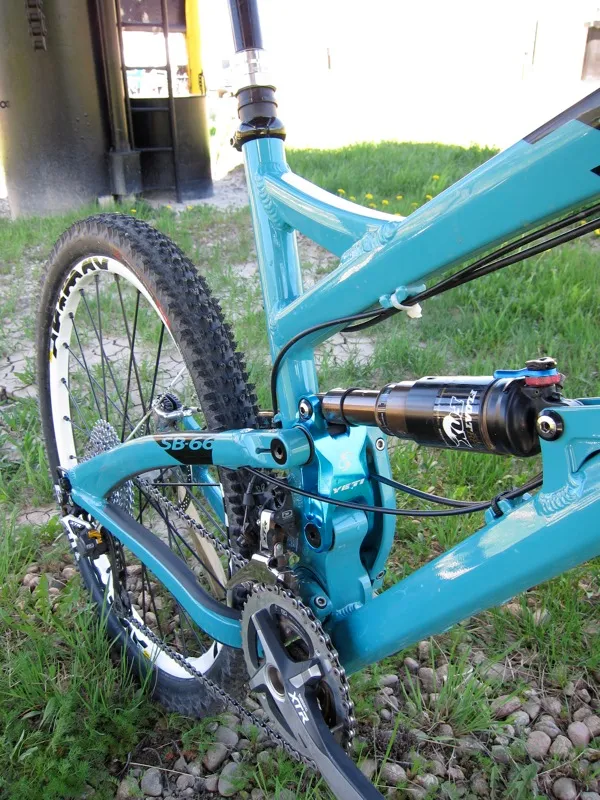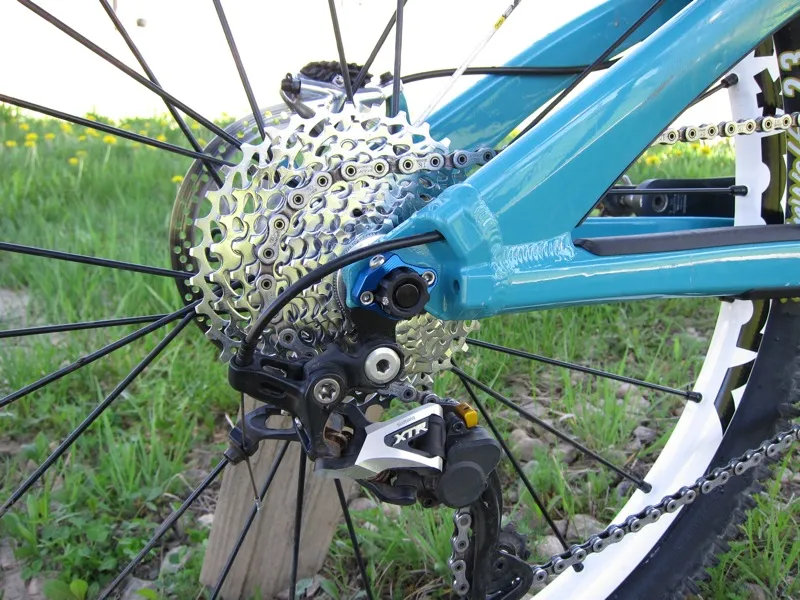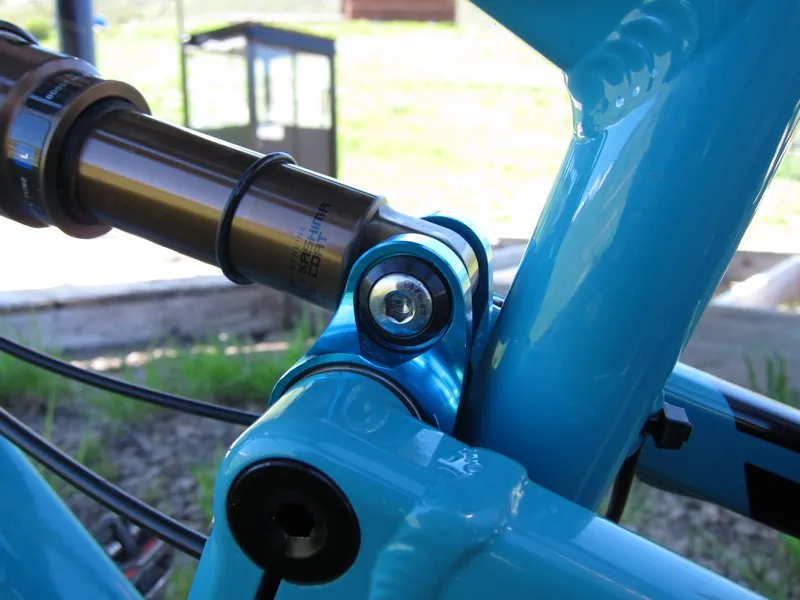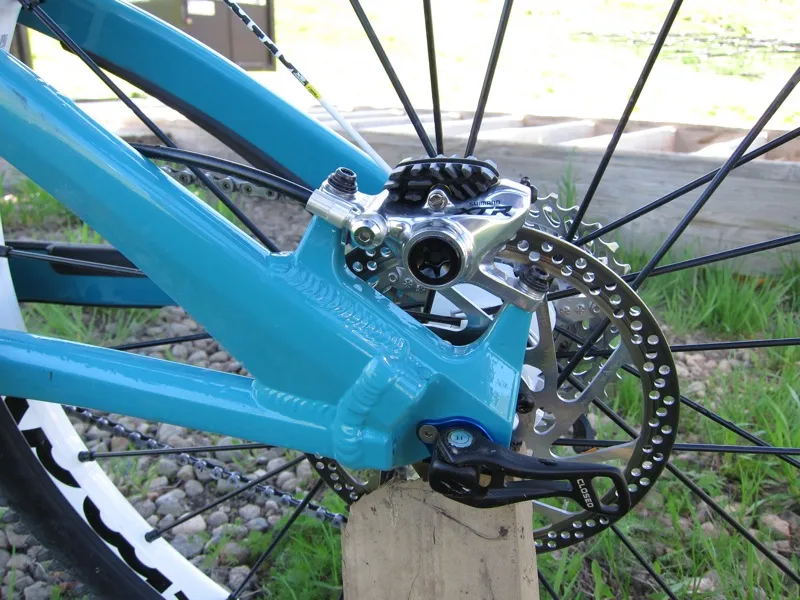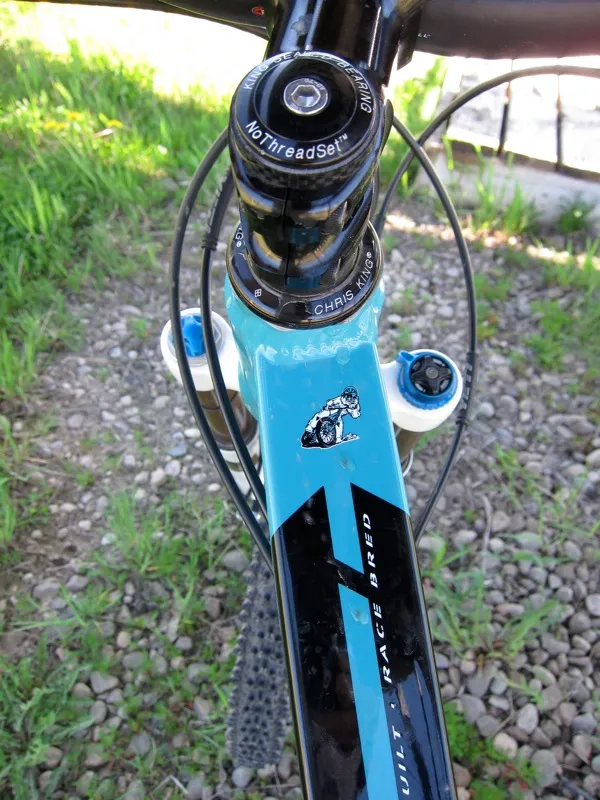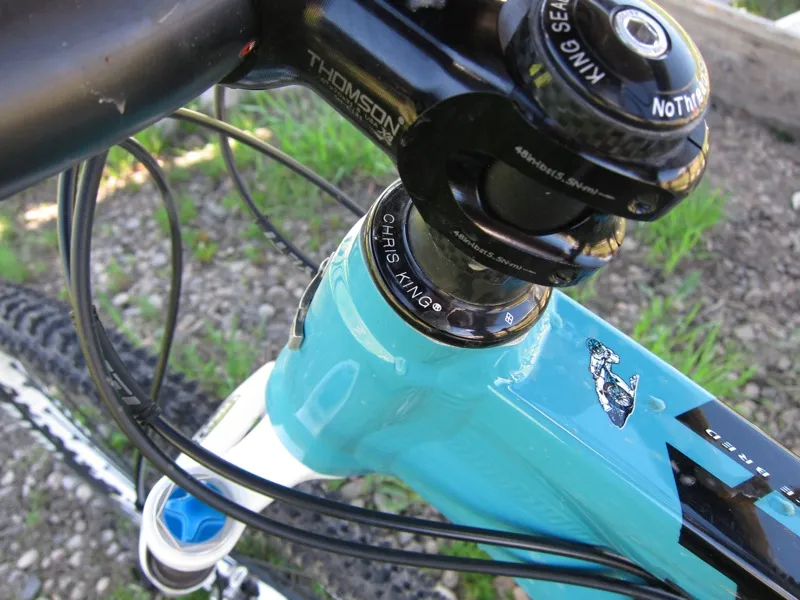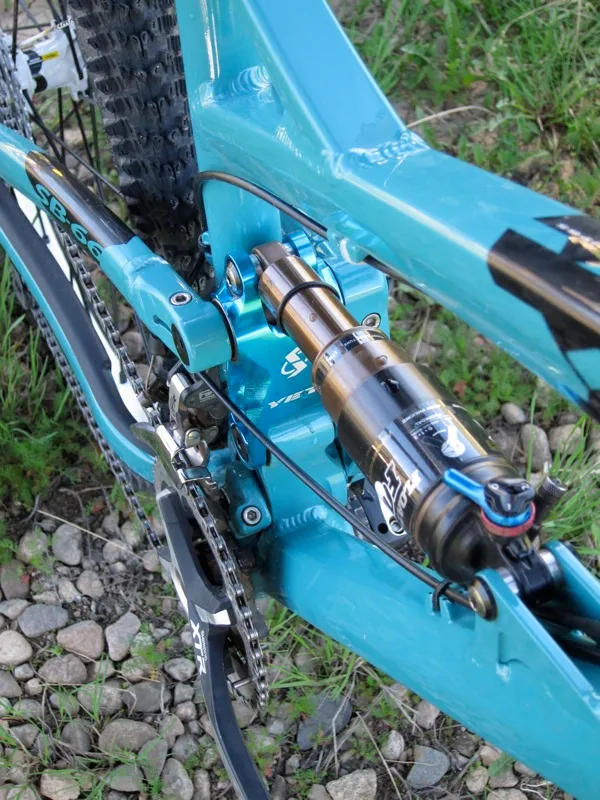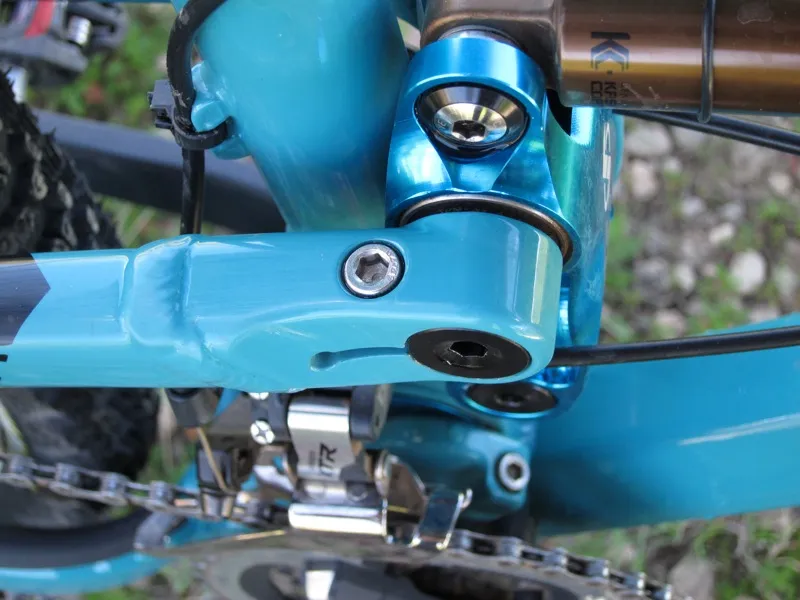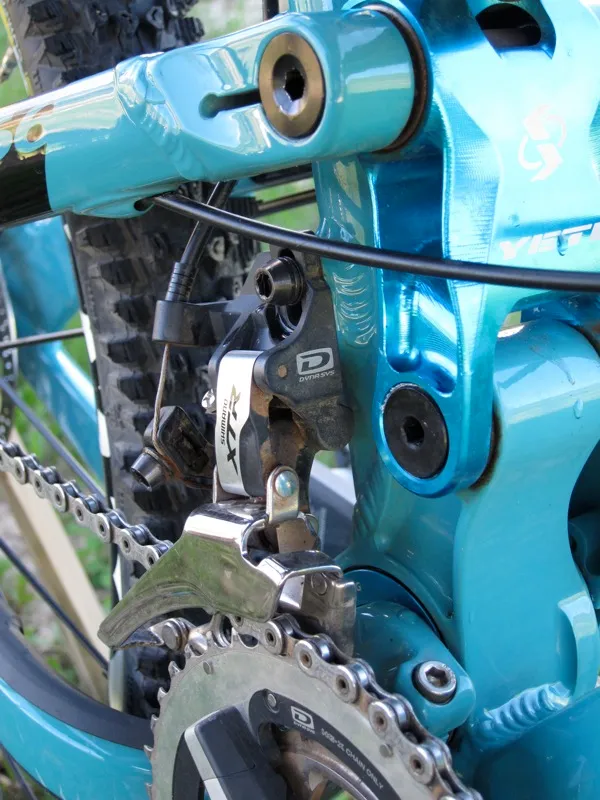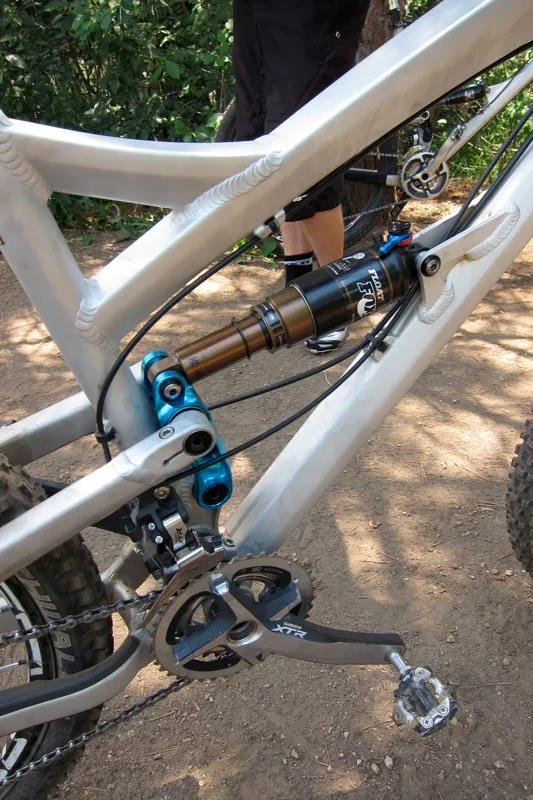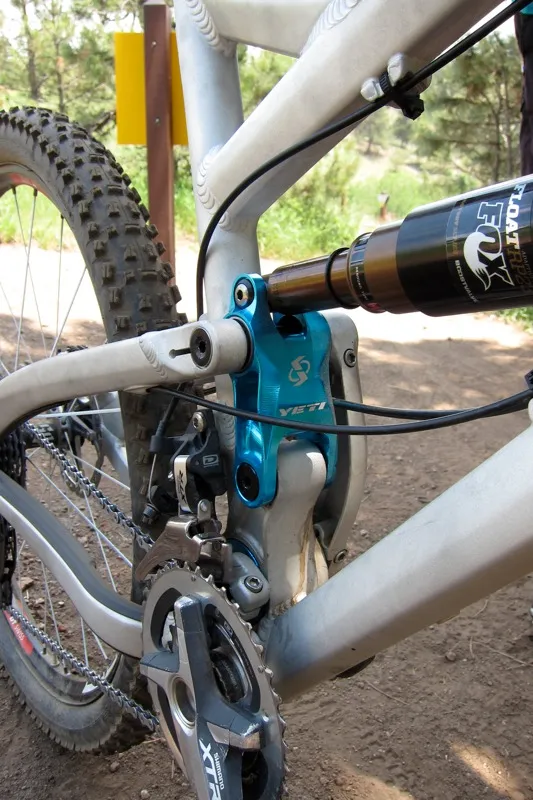It takes some confidence to call your new bike a ‘super bike’, but that’s precisely what Yeti have done with the 6in-travel SB-66. So, does it live up to its extravagant billing? Well, after two introductory rides we can safely say it has rendered the iconic 575 trail bike mostly irrelevant, save for that model's lower price.
The SB-66 holds its own admirably next to its direct 'boutique' competition, as well as bikes from more mainstream manufacturers, including just about any trail bike standout you can name. In a word, this one's a winner – and it’s not even made from carbon fiber, yet.
Ride & handling
The SB-66 – SB stands for 'Super Bike' and the numbers reflect the wheel size (26in) and travel (6in) – is like nothing else in Yeti’s line; it’s like they took the AS-R 5 and 303 and smashed them together. It features Yeti's trademark slack angles, which are becoming increasingly popular with other trail bike manufacturers, and relatively short chainstays that feel even shorter than the numbers suggest. The medium frame fit our 5ft 9in test rider perfectly for aggressive all-day riding with a 70mm stem.
The bike climbs like a champ – easily as well as Yeti’s 5 or anything else in the trail bike category, and many cross-country bikes too, for that matter. The suspension remains remarkably quiet during seated pedaling without any sort of platform damping. In fact, we reckon you could swap the super-adjustable Fox RP23 Adaptive Logic shock fitted to our test bike for a more basic Float R with Kashima Coat with no loss of performance, shaving a few grams in the process.
While the suspension is barely affected by pedaling inputs, it remains active and responds to the terrain in a manner that makes it easier to ride over technical rocky grunts. If you stand up, the suspension does react to the weight change. However, the pedaling performance isn’t degraded beyond use.
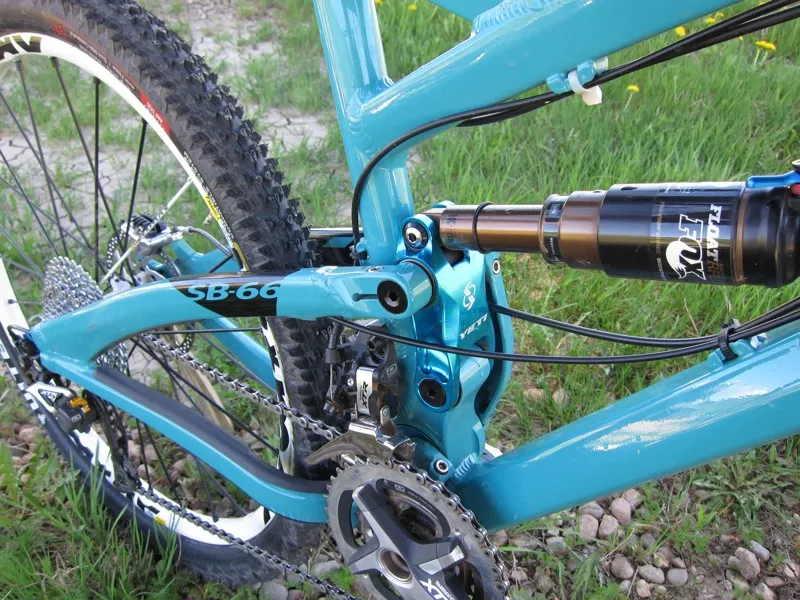
The new Switch Technology suspension system is slung relatively low for better handling
Downhill control is very good and the SB-66 seems to eat up square-edged bumps. Its impeccable (seated) pedaling manners are paired with bottomless-feeling travel which has a sporty rather than plush feel, making it a very capable machine in the hands of a skilled rider. It skips over high-frequency bumps and easily handles moderate-sized drops.
During our first ride, the incredible pedaling and bottomless feel left us searching for more support in the mid-stroke. We later found out that the rear shock was faulty and had been left with little compression or rebound damping. This underlined the effectiveness of Yeti's new Switch Technology suspension design – it works pretty well even with an undamped shock. In fact, it works better than some rival designs in full working order.
A second ride with Yeti co-owner Chris Conroy at Apex Park – part of the Jefferson County, Colorado trail system and Yeti’s lunchtime stomping ground – left us with an even more favorable opinion of the bike. With a properly tuned damper we found the suspension system easily tunable, quiet to pedal from a seated position, firm in the mid-stroke and with an effective action that helped both when going up and down.
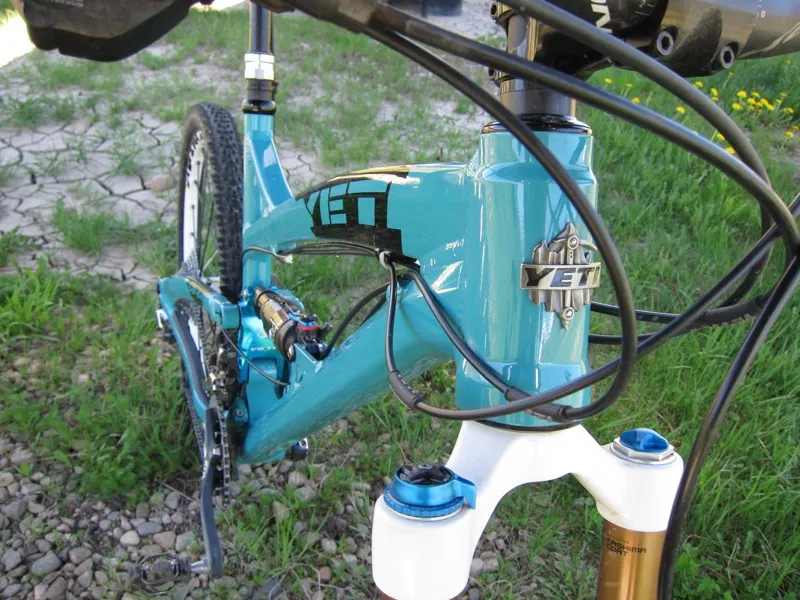
Swoopy lines, big tubes and a burly tapered head tube set the tone for Yeti's latest bike: stiff and brawny
Frame
The SB-66's chassis is contemporary in all respects. Even before delving into the specifics of its suspension, it not only 'keeps up with the Joneses' but actually betters its competitors in a number of ways. The tapered head tube and massive hydroformed main tubes set a tone of stiffness for the whole frame, resulting in a bike that feels stiffer than Ibis’s new Mojo SL and at least as stiff as Cannondale’s Jekyll.
Out back, there's a 12x142mm through-axle, which is easily adaptable to 135mm or quick-release via Yeti’s chip system. However, the 142mm standard seems to be the best choice because of a combination of stiffness and ease of use. The through-axle adds stiffness to the rear wheel and puts the icing upon the already stiff one-piece welded sub-frame. Based on a massive forged main pivot assembly, this has a stouter feel than similar 'dual-link' designs (DW-Link, Maestro, VPP) that use two short links.
At the bottom bracket the SB-66 incorporates a standard shell, but as an extra feature Yeti have engineered a removable ISCG 03 and 05 guide mount, making it supremely versatile. Other touches include a high-direct front derailleur mount and cable bosses for a dropper post, which is a must for this bike.
The key feature of the SB-66, however, is an all-new suspension system called Switch Technology, designed by David Earle and Luke Beale. These two industry suspension design stalwarts, who now own Sotto Group, first presented the system to Yeti two-and-a-half tears ago at the Sea Otter Classic. A month later they brought a rough but working prototype to the company's office in Golden, Colorado, and the pair then worked with Yeti through two years of refinement.
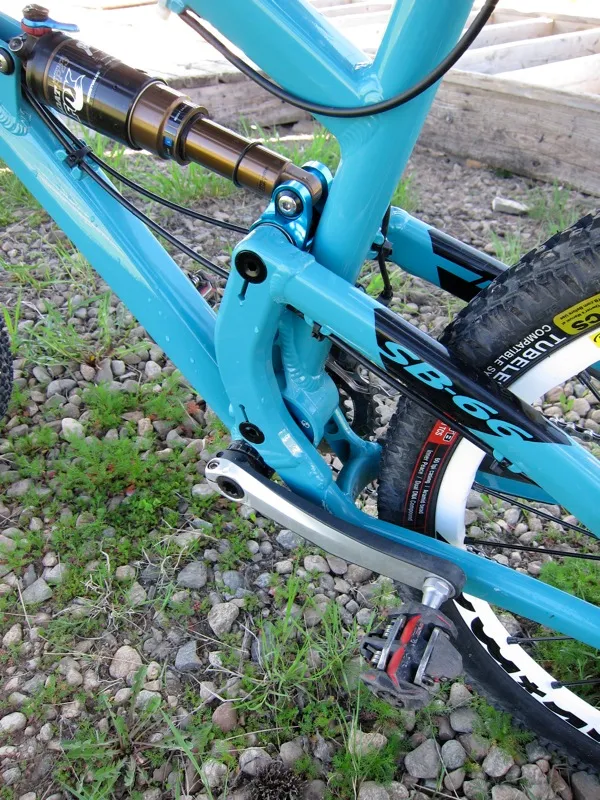
The non-drive side gives a better view of the suspension layout
With most dual-link designs, there's a careful balance between the anti-squat characteristic of the suspension and its sensitivity, and that’s what Yeti and Sotto claim to have found a way around with Switch Technology. The new system is said to uncouple suspension characteristics from pedaling characteristics. It achieves this via use of an eccentric link which switches direction once it hits an ‘inflection point’ at a predetermined point in the bike's travel.
At the beginning of the travel the Switch link rotates backward, moving the lower pivot rearward. This is said to improve small bump compliance, conserve momentum and offer a responsive pedaling platform – all of which we found to be true while riding the SB-66. At the inflection point, which Yeti claim comes at roughly 100mm, the eccentric link reverses direction and starts moving forward. This quickly slows down chainstay growth, diminishing the impact chain forces have on the suspension.
There's another change in the final inch or so of suspension travel, where the leverage ratio that has previously been linear suddenly spikes. “As the suspension comes back, as it moves through its arc, that last bit of travel is inherently less efficient,” Conroy told BikeRadar. "So we spike the leverage ratio at the very end of the stroke and that allows us to move through all the rest of that travel and overcome any potential inefficiency in the system.
"That’s the secret for that last inch of travel; because the [rate of change in the chainstay length] is dropping so quickly, it de-couples the anti-squat from the rest of the system.” This is what gives the 'bottomless' feel we experienced when riding. The leverage ratio also allows for a fairly basic shock tune and easy tuning of the damper, both by Yeti and end users. In essence, it takes the burden off the damper to make the suspension system work well, as our initial ride with a damaged shock illustrated.

Yeti's pivot within a pivot, the Switch link
Equipment
Our bike test bike was equipped with a ‘trail’ build kit – Shimano XTR paired with Fox’s 150mm-travel 32 F150 RLC fork and RP23 Adaptive Logic shock. While this premium package left us with zero to want, the SB-66's descending capabilities mean it's ripe for an upgrade to a 160mm-travel Fox 36 and more burly DHX damper.
We rode the bike with two sets of wheels – Mavic Crossmax STs and DT Swiss Tricons, both tubeless – and both performed well. However, the chassis definitely feels like it has the capability to handle stouter parts in this area, too – we'd opt for something like Mavic’s Crossmax SX or DT Swiss’s EX1750, with 2.35in tires.
The Thomson X4 stem was appropriately short, and plenty stiff, as was the Easton bar wide; RockShox’s Reverb dropper post functioned as one would expect a category-leading component to function. While not our favorite shape, the customized WTB ‘Yeti’ Silverado saddle was a classy finishing touch.

